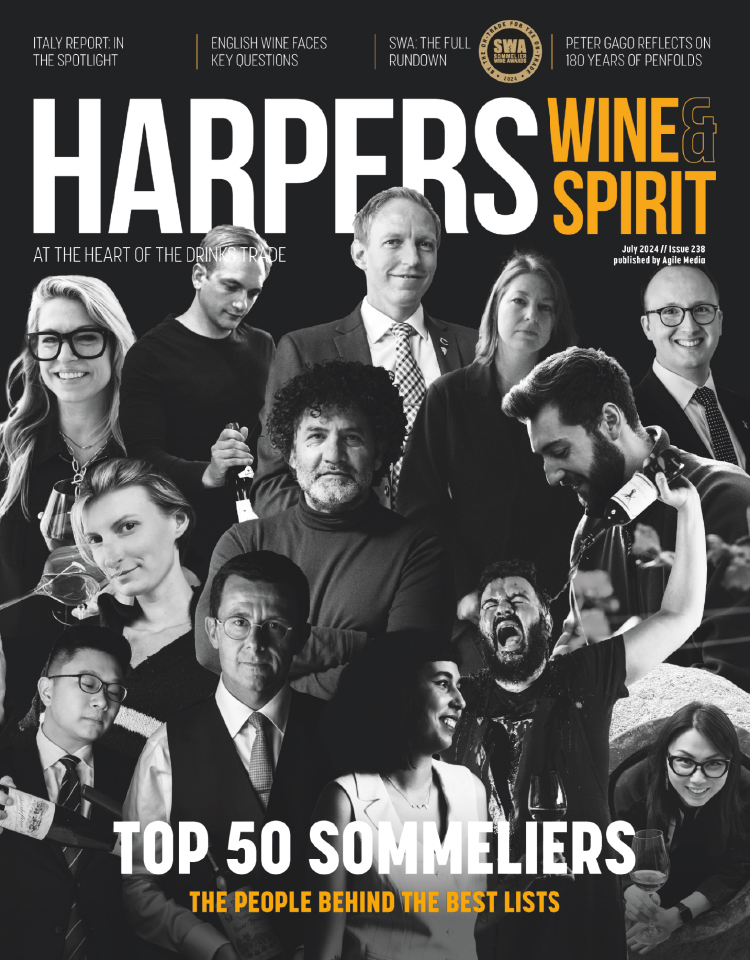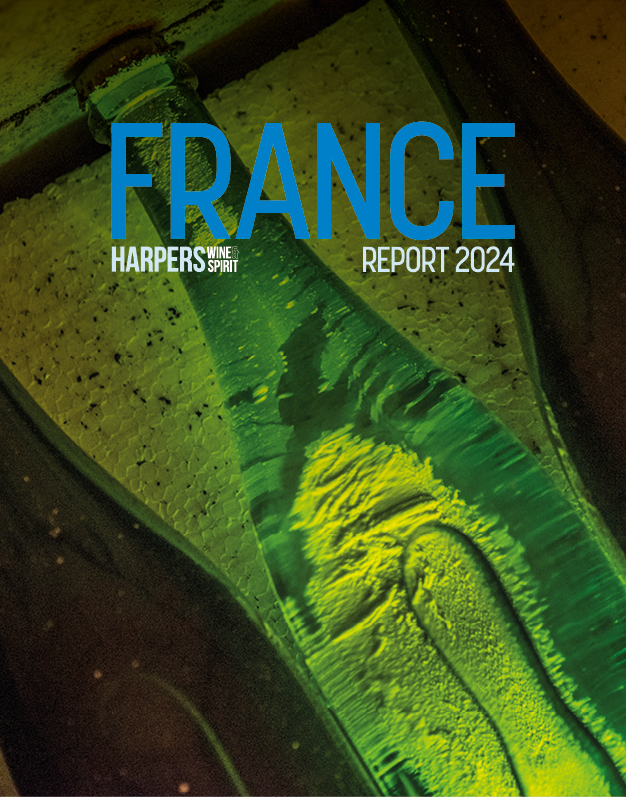The analyst
When it comes to star formation, we are beginning, thanks to Hubble, to know more about nebulas and protostars than about those of the Michelin variety. But it's clear that the creators of the gastronomic universe have expectations - certainly with regard to the food, and probably with regard to the wine as well. None will have been disappointed by the wine list at Gordon Ramsay.
As at many other three-star restaurants, half the list is wrapped in the Tricolour. There are deep verticals of all five first growths, up to a dozen of each, stretching back further than the oldest Chelsea pensioner (Lafite to 1894). There is the 1900 Margaux (11,000), the 1945 Mouton (10,000) and the 1945 Yquem (3,200). There are all five red grands crus from DRC, in several vintages, and all five of the Montrachets', including the thing itself, again in several vintages. But then there is also - every bit as surprising as the Scottish head chef or the English head sommelier - the Domaine du Pesquier Vin de Pays de Vaucluse at 5 a glass.
Ronan Sayburn MS may use less colourful language and have a less florid signature than Ramsay. But he has made his own mark on almost every page of a list that conforms to high expectations while challenging, surprising, and even mildly shocking those who spend the necessary time with it. Sayburn has the courage of his convictions and resists tokenism. How many lists in restaurants such as this dare offer fewer Champagnes than they do Greek whites?
There is no unexpected or unwanted originality in the arrangement of the list, which is organised by country, region and style, with half-bottles and larger formats towards the back (though it is, as all too often, Port and Madeira that bring up the rear). Sherry, thankfully, makes it on to page 1, as a wine by the glass, and if there is going to be only one, it could not be better than Hidalgo's Palo Cortado Viejo. All of the Champagnes are available by the glass (except those in half-bottles), though the range is sleek. All four are fine - R de Ruinart (en magnum), Gosset Grand Ros, Mumm Grand Cru and 1996 Dom Prignon - though some might regret the absence of growers' Champages (there is Jacques Slosse Grand Cru Blanc de Blancs en demi) and the lack of older vintages. The eight whites/ross and eight reds by the glass include an eclectic mix of styles, ranging from Schloss Gobelsburg's 2004 Ried Lamm Grner Veltliner (12) to VOE's 2003 Coyam (Chile, 8) and 2002 Ornellaia (19.50). Glass sizes are generous, at 125ml for Champagne, Sherry and sweet wine, and 175ml for whites, ross and reds.
The Sommelier Selections (four whites and five reds) are perfect for drinking right now'. There are two New World Sauvignons - 2004 Amayna from Chile and Peter Michael's 2003 L'Aprs Midi from California - but at least there is no modish, snobbish dismissal of the variety, while the JJ Prm 1999 Wehlener Sonnenuhr Riesling Auslese is presented with the plea that everyone should try these wines at least once in their lifetime'. Franz Keller's 2001 Sptburgunder Selection sits alongside Ren Engel's 2001 Vosne-Romane Premier Cru Les Brles.
There is a good selection of French regional whites and ross, given much deserved prominence at the head of the list - not only top Languedoc-Roussillon, but Provence and Savoie (such as Jacques Puffeney's superb Arbois Vin Jaune, meticulously noted as being in its 62cl clavelin). Whites from Alsace, the Rhne, Bordeaux and the Loire are carefully chosen, so that any apparent gaps - such as Alsace Gewrztraminer, Pouilly-Fum and Sancerre (offered only in other formats) - seem deliberate. Burgundy shines brightest (predictable but not regrettable), though as well as many of the most prestigious names (Coche-Dury, Lafon, Leflaive, Ramonet, Sauzet etc) there are quirkier wines such as Roulot's exceptional Aligot and Daniel Rion's Nuits-St-Georges Premier Cru Les Terres Blanches. Red Burgundy and Bordeaux are as star-studded as one would expect. A few well-known names are not among the Pomerols, though one can hardly criticise a range that includes l'Eglise Clinet, L'Evangile and Lafleur in good mature vintages back to 1947.
There is an excellent selection of Austrian and German wines (Baden, Franken and Rheinhessen, as well as Mosel-Saar-Ruwer, red as well as white), and the drier styles are helpfully identified. For those more adventurous still, there is Szepsy's scintillating Tokaji Furmint Szent Tams and Terlano's top cuve Quartz (Alto Adige). Reds from Italy range beyond Piedmont and Tuscany as far south as Sardinia and Sicily. The solitary red Rioja is heavily outnumbered by stylish wines from Priorato and Ribera del Duero (Barbier and Palacios, Dominio de Pingus and Vega Sicilia Unico). There is only one Portuguese red, though it might soon be supplemented by Douro 2003s. The offerings from Argentina, Chile and New Zealand will satisfy those who need to stray south of the equator, while the ranges from Australia and California are stronger still, with flocks of rarae aves such as mature Hunter Valley Semillon (Tyrrell's 1989 Vat 1) and Margaret River Cabernet (1995 Moss Wood).
The selection of sweet wines is as golden as great Sauternes, with good-value Coteaux du Layon, Montlouis and Pacherenc du Vic-Bilh, as well as more recherch treats such as Chteau Gilette Crme de Tte 1967, Jean-Louis Chave's 1996 Hermitage Vin de Paille, Franz Knstler's 1996 Hochheimer Kirchenstuck Eiswein Aschrott and Szepsy's 1999 Tokaji Asz 6 Puttonyos. The range of Vintage Ports is wide (back to 1955), though it is questionable whether the wines are always the best of their respective years. As sole representatives, Taylor's 20 Year Old Tawny and Cama de Lobos 1864 Solera Madeira are worthy, though they cannot reflect the thrilling variety of these styles.
The choice among half-bottles and larger formats is exceptional, with many wines not available by the bottle, including two of the best Italian reds on the list - Bartolo Mascarello's 1989 Barolo and Gaja's 1989 Barbaresco.
It would be starry-eyed to expect favourable prices on the famous names, though the expletives will be confined mainly to the kitchen. Mark-ups are no more extortionate than at most Michelin three-star establishments - and less so than at many - while there are plenty of affordable wines that represent sound value. There are bigger, heavier, stuffier lists elsewhere, but none that strikes a better balance between delivering legitimate expectations and puncturing preconceptions. Sayburn is a head sommelier who uses his head rather than letting his success go to it, and his list is a model of its kind.







